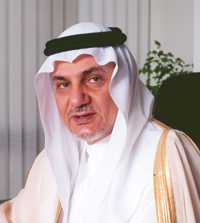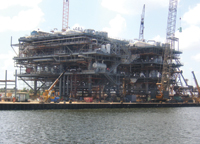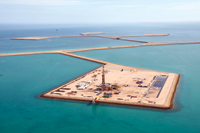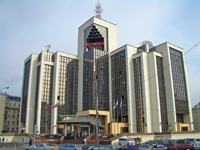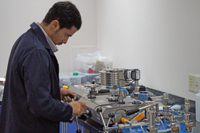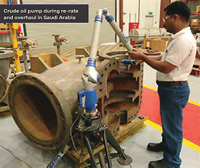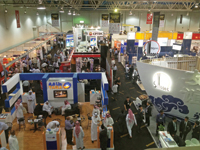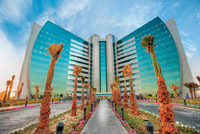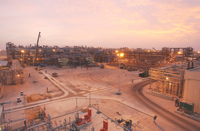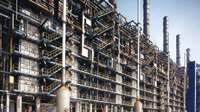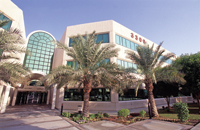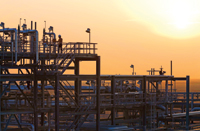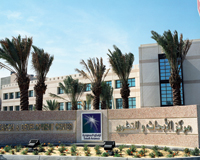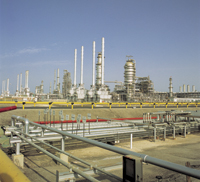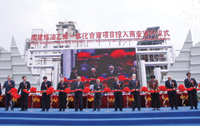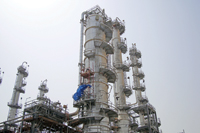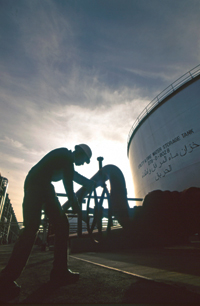
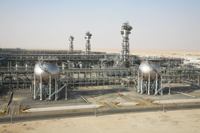 Aramco ... expanding its hegemony
Aramco ... expanding its hegemony
IT IS undisputed that the Kingdom of Saudi Arabia is home to the world’s largest proven conventional oil reserves (around 18 per cent of global supply), boasts production capacity in excess of 10 million barrels per day (mbpd) – the world’s highest, and is the world’s leading exporter.
It is also the leading player in, and de facto leader of the powerful The Organisation of the Petroleum Exporting Countries (Opec). Within the grouping and in the industry as a whole, Saudi Arabia remains the only producer to hold significant so-called ‘swing’ capacity.
Alike all of its oil producing peers across the region, Saudi Arabia is a nation heavily dependent upon oil. The kingdom’s oil revenues accounted for around 90 per cent of total Saudi Arabian export earnings, up to 80 per cent of state revenues, and just over 44 per cent of the country’s GDP.
This goes to show that despite its best attempts to diversify, Saudi Arabia’s economy remains heavily dependent on its main cash crop, the black gold. Away from petroleum, the kingdom’s other natural resources include natural gas, iron ore, gold, and copper.
Despite its ‘heaviest of the heavyweights’ status in the industry, Saudi Arabia is far from a unilateral actor. Being the world’s leading producer nation and the unofficial leader of the Opec group, the kingdom has a major role to play in global energy relations that stretch far beyond its borders. Closer to home, Saudi Arabia also maintains close ties with some of its neighbours and key trading partners. It works bilaterally with both Bahrain and Kuwait over the distribution and exportation of shared old resources.
Although it may enjoy a lofty status within the industry, the nation is far from resting on its laurels. The success of these working relationships with strategic partners such as Bahrain and Kuwait should provide a solid blueprint from which Saudi Arabia can build on in the future.
 |
Ras Tanura ... one of Aramco’s major |
As it expands its downstream involvement in other countries, it is almost certain that bilateral relations are set to play a more important role in the nation’s energy relations – most notably with the likes of emerging market Bric giants China and India.
In terms of how the industry is run, it is very much a case of ‘keeping it in the family’ with Saudi Arabia. Overseas oil firms are restricted by law to service contract roles only, which allows domestic players – and in particular Saudi Aramco – to dominate proceedings.
The state-run firm, which can proudly claim the crown as being the world’s largest oil company in terms of proven oil reserves and production, is not content with its position, however. Rather it has ambitious plans to increase capacity from where it stands today at 11.6 mbpd to 12.5 mbpd by early in the next decade.
Saudi Arabia is and the leader amongst its Opec equals. But does biggest always mean best? In the case of Saudi Arabia’s oil industry, it would seem so. It is the envy of its neighbours, its Opec peers, and its global competitors. But even the world’s largest producer is not without its problems. For one, global demand sentiment is looking increasingly bearish this year. But also, Saudi Arabia is coming under pressure from rising production in other nations, such as in Opec peer Iraq for example. This all translates into a likely fall in demand year-on-year in 2013. Taking all this, and the constant challenge of balancing supply and demand together with prices high enough to support the kingdom’s fiscal expenditure into account, it has its work cut out. Indeed, while Saudi Arabia may enjoy the benefits of the being the world’s leading player in the global oil industry, nobody ever said it would be easy to maintain its status.
Add growing pressure within the Opec group to scale back production in an attempt to keep prices inflated (and above the $100 a barrel mark) into the equation and things become complicated further still. In fact, moves by Saudi Arabia to raise its production output have been repeatedly stifled in the past.
Consistent and often restrained output levels have not prevented the kingdom from pushing ahead with its own oil industry goals, however. At the time of writing, Saudi Arabia already has a large investment programme in place.
In October of 2012, Khalid A Al Falih, president and chief executive officer (CEO) of state-backed Saudi Aramco announced the outline for a $35 billion capital expenditure programme over the next five years to the end of 2017. The target of the investment initiative will be oil exploration and production (or as it is more commonly known, E&P), which comes as part of a bid for the nation to maintain its status at the top producer and exporter of oil.
The $35 billion high cash mountain ring-fenced for investment marks a sharp increase on the $20-30 billion investment initiative last launched over five years ago by Saudi Aramco in an attempt to offset declining volumes from the explorers more mature fields. Interestingly, however, it is a direct consequence of the falling output from these very field that has spurred the next round of internal investment. It seems that out of need Aramco is getting increasingly aggressive in its strategy. The focus of E&P this time around will be to enhance existing projects and to further new upstream exploration initiatives.
Despite already being at the top, Saudi Arabia has a very good chance of staying there for a long time to come too. Indeed even after years of successful exploration and petroleum production, the kingdom remains underexplored, leaving potential for further rewards. According to the Oil and Gas Journal, Saudi Arabia contains approximately 265 billion barrels of proven oil reserves (plus 2.5 billion barrels in the Saudi-Kuwaiti shared Neutral Zone) as of January 1, 2013, amounting to slightly less than one-fifth of proven, conventional oil reserves worldwide.
But in the oil industry, it is more than just a numbers game. Although Saudi Arabia has around 100 major oil and gas fields in total, over 50 per cent of its total oil reserves are contained in just eight of its fields. The giant Ghawar field, the world’s largest oil field with estimated remaining reserves of around 70 billion barrels, has a higher volume of proven oil reserves than all but seven other countries across the globe.
Pertinently for the future of the Saudi Arabian oil industry, several of these key fields are in decline, meaning that just to maintain its stats – and not even improve it – the kingdom needs to work hard and invest big. The burden for this, of course, lies with Aramco.
Decline estimates for Saudi Arabian oil fields vary wildly, however. Back in 2006 Platts Oilgram projected that the declines rates for existing fields could range from 6-8 per cent per annum, meaning that the kingdom would need to both explore and produce around 700,000 bpd in additional capacity each year just to compensate for the natural decline rate. Meanwhile, the Ministry of Petroleum and Mineral Resources in Saudi Arabia maintains that decline rates are far lower, and actually closer to 2-3 per cent per year.
In terms of ongoing projects, Saudi Arabia has seven refineries. Together this septet have a combined crude distillation capacity of around 2.1 mbpd as of the end of 2011 – according to data from the US Energy Information Administration. Of the seven refineries, Saudi Aramco owns four outright – Ras Tanura, Jeddah, Riyadh and Yanbu – and also owns equity shares in a further three – Rabigh, Sasref and Samref. Two new joint venture refineries are currently under construction at Jubail (Satorp) and Yanbu, and are predicted to come onstream during 2013 and 2014, respectively.
According to reports, Saudi Arabia also has approximately 2 million barrels of refining capacity overseas through the medium of joint and equity ventures in facilities in the US, Japan, China, the Philippines, and China.
Plans call for up to 2.14 mbpd of extra capacity by 2014 through the construction of three new refineries and the expansion of one more.
In April 2010, plans to expand were put on hold after US oil major ConocoPhillips announced that it was exiting a joint venture agreement with Saudi Aramco that was initially created with the intention of seeing the firm play its part in the construction of a new 400,000 bpd refinery at the Red Sea port of Yanbu.



































































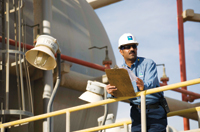
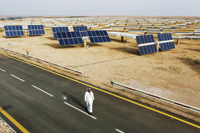


.jpg)
